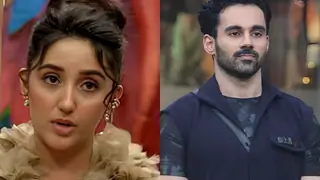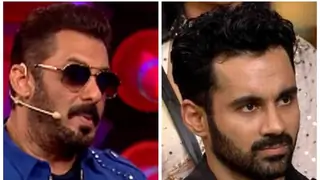Even for the most jaded cynic, the image of serpentine queues of smiling men and women waiting patiently in the harsh heat of Indian summer to cast their votes, cannot fail to inspire. Also impressive is that India regularly carries out this logistical miracle almost flawlessly, given the scale -some 714 million voters this time, of whom 420 million voted, making the elections the world's largest expression of democracy. Transfers of power in India are peaceful and orderly, and when change occurs it does not lead to the kind of anxiety that greets change elsewhere in the developing world, in particular, its own volatile neighborhood. Indian winners are gracious and don't go about jailing their opponents. Parliamentary debates are robust; the press is free; and the judiciary is often impartial. But all is not right with the world. The democratic roots are deep, but the Indian system has fundamental flaws and weaknesses. Its parliament has too many politicians with criminal charges pending against them. Its judges are overwhelmed by the load of pending cases. Its press often fails to hold politicians to account. And its bureaucrats are not under much pressure to perform. The result is staggering underperformance: India has the world's largest number of illiterate people, tens of millions of people live on less than a dollar a day, easily preventable diseases are widely prevalent and discrimination remains rampant. Unless India requires its pillars of governance to do better, it will continue to perform well below its potential. Take the Parliament. The bounce the stock market experienced in India after election results were announced was because the markets had feared instability. Most analysts had expected an indecisive verdict, which is why they have called the Congress's victory as resounding. But a closer look at the numbers shows that the support for national parties has dropped. As columnist Devangshu Datta points out in the Business Standard, the combined vote of the two national parties the Congress and the Bharatiya Janata Party actually fell to 47.4% in 2009 from 48.7% in 2004. But the votes smaller, or regional, parties have gained is divided among 369 parties this year, as against 215 in 2004. In this fragmented field, the Congress's share rose 2.1 percentage points to 28.6%, giving it 206 seats, still 66 short of majority. It gained 51 more seats this time, just as the BJP lost 22 seats (to finish at 116), its vote share falling to 18.8% from 22.2%. It is clear that the results aren't an overwhelming mandate for national parties over regional ones; moreover, the Congress has gained substantially, but it cannot declare victory yet in its efforts to regain its traditional role of being the centrist party a large majority of Indians support. The last time Indians gave a single party the majority was in 1984, when the Congress won over 400 seats out of 543, in the extraordinary election held within weeks of Prime Minister Indira Gandhi's assassination. Since then, India has held seven parliamentary elections, each returning a coalition, some of which were formed after results were announced. This political instability has led to public disillusionment. Beyond that, many Indians think politicians are corrupt, ineffective or have criminal links. Take corruption first. The assets of some mps have risen by gravity-defying rates between 400% and 900% over the past five years. Few mps gave credible explanations how their assets rose at such astonishing rates. So strong was the disenchantment with the available choices that some campaigners asked voters to use the rule 49-O of Indian election laws, which lets voters to declare that they don't want to vote for any candidate. The campaign failed; what was remarkable, however, was that it was launched in the first place.
While thousands of citizens of Mumbai held candlelight vigils, when it came to voting, the turnout in the constituency where the attacks occurred was pitifully low
Then think of ineffectiveness. Providing safety and security is the primary responsibility of the government. Juxtapose that with the fact that India has lost more people to terrorist violence in the past five years than any country other than Iraq, with the attacks in Mumbai in November 2008 being the most spectacular. While thousands of citizens of Mumbai held candlelight vigils, when it came to voting, the turnout in the constituency where the attacks occurred was pitifully low. voters in wealthy areas, such as South Mumbai, don't think they need to vote; they are able to operate without a government. Finally, criminal charges: Analysis by voter education groups show that some 15% of all candidates had criminal charges pending against them. After the elections, the Association for Democratic Reforms and the National Election Watch calculated that 153 of the 535 mps or nearly 28% whose affidavits were available have criminal charges filed against them. In 2004, the figure was 128 mps. Such charges include attempted murder, robbery and forgery. The BJP leads with 43 mps with criminal charges pending; the Congress has 41. Furthermore, some 98 mps 39 from the Congress, 16 from the BJP have yet to provide their tax details. Of the 300 mps with assets exceeding $211,466 the average MP's assets are about $1 million 25 have not declared their tax details. To be sure, these are only charges, and the cases against them are still pending. But why should that be so? That brings us to one of democratic India's worst-kept secrets: how the rule of law is administered. Court cases remain pending because the courts simply cannot deal with the load. In India, appeals are frequent and possible even at procedural levels, and judges face such a mounting backlog that they routinely grant postponement of trials. In 2008, the number of cases pending in all courts stood at 2.9 million. One reason the backlog mounts is the unwillingness or inability of many state governments to appoint a sufficient number of judges to their courts. Some 100 judges at high courts and over 3,000 judges at lower courts remain to be appointed, and in some states, the vacancies are close to 40% of the bench-strength. Little wonder, then, that foreign investors want international arbitration to settle commercial disputes, and many Indians call for "special courts" to try specific cases. The Indian judiciary is largely impartial, and judges have often ruled against the government, but activists say that in recent years the judiciary has deferred to the state in matters of national interest. Detention without trial is common in such cases, and the number of people held in custody while waiting for their cases to come up for hearing, runs in the tens of thousands. In a recent scandalous case, Binayak Sen, a physician and human-rights activist was kept in jail for two years without being tried until the Supreme Court ordered his conditional release on health grounds in late May. Mr. Sen operates a clinic for tribals in Chhattisgarh state, and he has been an outspoken critic of the state government over human-rights abuses committed against local tribes by state security forces or the state-supported vigilante group Salwa Judum purification hunt. An international campaign, including 22 Nobel laureates, called for Mr. Sen's release. The Supreme Court was right in releasing Mr. Sen, just as it was right in taking the Gujarat Government to task over its failure to protect the victims of anti-Muslim riots in the state in 2002. But in each case, the Supreme Court has had to intervene because lower courts have failed to uphold citizens' rights. While India's lower courts are doing too little in cases that matter, they are doing too much in other cases that should not matter as much. Judges have given orders to bureaucrats to prevent the demolition of a particular slum, or ordered municipalities to cut certain emissions by half before a certain date. Such judgments are sometimes not enforced, eroding judicial authority. Some judges with a penchant for publicity have taken up frivolous cases, such as suing artists, movie stars and other celebrities for conduct they disapprove of such as kissing in public. What can citizens do in a democracy where a sizeable proportion of mps are of questionable repute and courts cannot administer justice quickly? Ideally, they would turn to the media. Yet television channels routinely blur fact and opinion. Many viewers were aghast at the shrill, intrusive and jingoistic way tv anchors covered the November terror attacks in Mumbai. But what of the print media, with its long tradition of freedom of expression? This election showed a seamy side of Indian newspapers. According to several reports, some newspapers told candidates that if they paid the publication, they would get better coverage, and if they paid more, their rivals would get less coverage. The rot within the media runs deep. A leading newspaper refused to send reporters for a World Bank-supported program to train journalists on covering environment and sanitation issues, arguing that if the sanitation department wanted coverage, it ought to pay. Arguably, these newspapers take their cue from the concept known as private treaties, associated with the Times of India, the country's largest-selling English daily, but practiced by several other media companies. Under these agreements, a company looking for investment enters into a private treaty with the newspaper. The paper takes a stake in the company, providing advertising support and favorable editorial coverage. The newspaper hopes to make a profit when the company goes public. Not only are readers not told of such arrangements, but adverse news about those companies is sometimes underplayed, or not reported at all. That leaves India's permanent government the bureaucracy. With the press failing to live up to its watchdog role, the judiciary hampered by inefficiencies, and politicians lacking incentives to reduce barriers to doing business, procedural delays abound in India. The World Bank's"control of corruption indicator" places India at 103rd out of 201 countries in 2008, an 11-point drop compared to the previous year. While India has improved India's rank has risen to 115th from 132nd out of 157 countries between 2006 and 2008 the pace of reforms has remained slow. Out of the 181 countries the World Bank surveys to monitor the ease of doing business, India's rank dropped to the 122nd position from 120th last year. It is still far faster to close businesses, start businesses and clear administrative hurdles in other parts of the world.
Indians deserve a more vigilant media, a well-resourced judiciary, a bureaucracy with fewer discretionary powers, and a parliament filled with politicians with assets proportionate to their income and without criminal charges pending against them. But they aren't getting that, in spite of their sincere, touching faith in democracy. Some Indians, therefore, have begun to blame the country's democratic processes for its sluggish economic performance. That's preposterous. Public disenchantment with the way things are is as much because of the criminal-political nexus, the declining faith in the judiciary, the press and the bureaucracy. It is not surprising, then, to see the BJP projecting Narendra Modi, Gujarat's chief minister, as its future leader, citing his economic performance, while ignoring the fact that he is accused of complicity in the 2002 massacres. The Congress, on the other hand, will very likely turn to Rahul Gandhi, whose father, grandmother and great-grandfather have all been prime ministers of India. Many Indians don't like intolerance and feudalism, and some are looking at autocracies with admiration. But democracy is not India's weakness; it is its strength. Democracy ensures that the decisions the government makes have public approval; it also provides the intellectual space for those who disagree with particular policies, to have their say. Democratic states are strong; they aren't weak in enforcing laws. Mature, modern, democracies operate efficiently and protect their citizens, while offering opportunities to prosper.vIndians have the political freedoms; now they need economic ones. The government needs to do less, so that its people can do more. India now has the consensus it needs. There is something noble about the faith and support millions of Indians continue to pose in their politicians. It is time they earned that trust, so that India can demonstrate that democracy and development are not mutually exclusive.






![[SB124520808768422263] hspace0](https://s.wsj.net/public/resources/images/OB-DW642_0616pa_D_20090616234319.jpg)


![[SB124652895125985011] vspace5](https://s.wsj.net/public/resources/images/OB-DZ328_0702ig_D_20090702060347.jpg)
![[Airline-Sector Woes Slam Indias Highflier]](https://s.wsj.net/public/resources/images/P1-AQ530_GOYAL_NS_20090701173316.gif)

![[Pranab Mukherjee with his team]](https://s.wsj.net/public/resources/images/OB-DZ713_ibudge_D_20090706034014.jpg)













